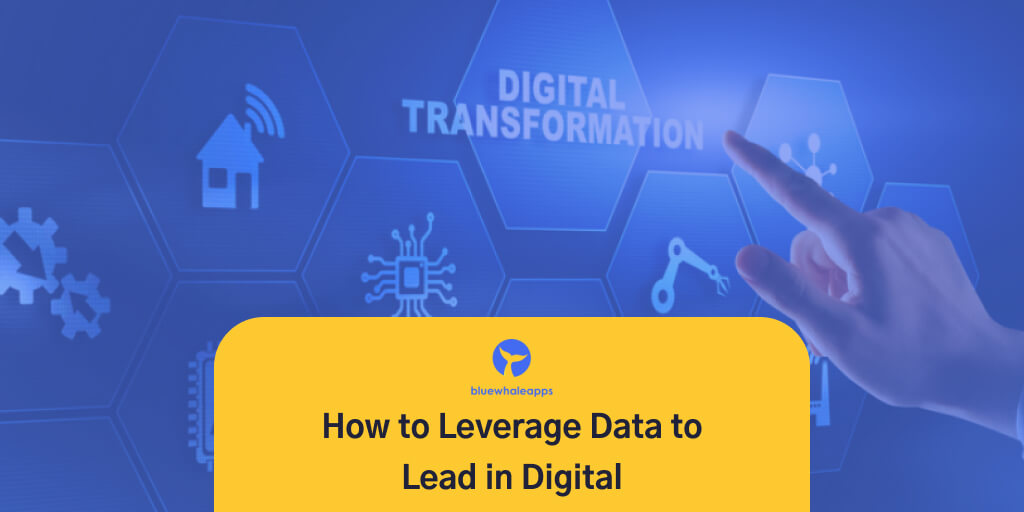Why is digital transformation necessary for luxury brands?
Traditionally luxury brands have been good at collecting data about their customers and effectively leveraging it in marketing. But data acquisition and usage are changing and luxury brands will need to change with it if they are going to keep up with digital trends. To take advantage of the transformation that we are seeing we need to understand these changes and how businesses can take advantage of them.
If businesses can get this right, they can expect more successful marketing campaigns, happier customers that are more engaged with their brand, new revenue streams, and better customer loyalty.
Get it wrong, and they can expect to be overtaken by more tech-savvy brands as their customers become Millennials and Generation Z. This is not only about software and other technology products, the same applies now to clothes, cosmetics, lifestyle products, services, and much more. Every kind of business needs to embrace digital transformation services and start working with a data-driven model if they don’t want to be left behind.
It is often wise to seek the advice of a digital transformation consulting service like that provided by Blue Whale Apps. Digital transformation services can help overcome the technical and cultural changes required to succeed in the space. And to truly embrace the changes required to transform your business into a technology-led operation.
What is a data-driven model?

Traditionally businesses have made decisions based on what the business and its executives want and how to achieve maximum profit. In contrast, businesses that adopt the data-driven approach make decisions based on what the data shows the customer wants. This customer-centric model is not only better for customer satisfaction, but also results in much faster business growth over the long term, better return on investment, and better customer loyalty.
But all data is not created equally, there is a big difference between the way businesses worked with customer data in the past in the form of structured data and the new era of unstructured big data.
What is the difference between structured and unstructured data?

You don’t need to be a data scientist to understand how data acquisition and analysis have changed with the age of big data.
Structured Data
This is the age-old way of storing data about a customer that you would expect to see in any business, once residing in a Rolodex it is now more commonly found in an SQL database like Salesforce or Microsoft Dynamics, or on a larger scale in a ‘data warehouse’. This generally consists of fields like:
- Name
- Address
- Telephone
- Age
- Etc.
One advantage of structured data is that it is easy to use for anyone in the business.
Luxury brands have historically been very good at collecting detailed structured data bout their customer’s purchase history, income bracket, exclusive memberships, and more. This is a great way to profile them for marketing but it has its limitations.
Unstructured Data
We are now in the age of unstructured data or ‘big data. This is collected in mass and stored in its native format, think, emails, social media posts, IoT data, image data, usage data, engagement data across customer journeys, lifestyle and buying habits, and much more.
Because it does not need to be formatted and entered into a ‘structured’ database it can be collected and stored in much larger quantities and then analyzed later. This wide variety of formats would be impossible to keep in a structured data method, and no structure means that you can collect more of it much more quickly. Unstructured data is classed as ‘schema-on-read’ which means that you can decide how you want to use it at the point of analysis rather than the point of collection.
Unstructured data is stored in ‘data lakes’ and would be impossible to analyze or use in a meaningful way directly by a human. We need specialized AI tools to manipulate it and mine the information we need from it.
The amount of data created each year will reach 180 zettabytes by 2025, according to market research firm International Data Corporation (IDC)
How can we effectively use big data?

Unstructured big data is generally regarded as qualitative rather than quantitative, in other words. So we are not generally looking at it microscopically as we would look up a phone number in a structured database. Rather we are looking for general trends and directions that are indicated by analyzing the data on mass. This is vital for understanding potential customer cohorts and identifying where and how to spend a marketing budget.
The obvious use for this kind of data is for marketing customization. Because if you can understand purchase history, activities, demographics, browsing history, media viewing data, and many other touch points you will be able to answer the most common marketing questions such as, What do I advertise? To who? Where? And when? And many other questions that advertisers need to focus their campaigns on to reduce cost and increase effectiveness.
What is important when starting to work with unstructured data, is to understand that we are not trying to make the data perfect or to identify a single user profile in the data. It is more about understanding trends in user preferences and being able to filter out the noise and categorize the data into useable cohorts.
It is also important not to begin creating data siloes, these siloes represent duplicate data that if not removed will become outdated and skew the results of the analysis.
Retail luxury brands and big data
Some luxury brands have been able to leverage heat map data in retail stores to identify where customers are spending most of their time. This allows the store to optimally place special offer products more effectively and even identify where to place sales staff. They are also using advanced algorithms to track customer try-on and even tie a customer’s Instagram feeds to their retail profile.
Using data for a more personalized experience
The more we can tune the user experience to their usage data the better that experience will be. In the digital world, this means understanding when they shop and for what, on which channels they like to consume their product information, and where they then go to make a purchase.
Customization of the shopping experience can be initially filtered by cohort, then with machine learning, it can be customized down to the individual user for a truly immersive and personal experience. After all, this is what luxury brands have always been good at, delivering a high-quality personalized experience in retail. In the past, this was provided by a human but now it is possible to deliver this experience with AI.
NFT now allows the customers to own the design of a product as well. In the case of NFT sneakers, it is possible to own a virtual pair for use online and a physical pair for the real world, both sporting the design that your NFT ownership represents. This ability to create unique digital assets adds a further layer to customer personalization.
Strategic steps to help bring the new vision of luxury to life:

When we provide digital transformation consulting services, we design a bespoke strategy for each business, but these are some of the key areas that should be focused on.
Employee data literacy
Everyone in the business needs to be on board with trusting the data and letting it make decisions, which can be tough at first and some people will think they know better.
Customer experience
We are now all familiar with the freemium model for software that is taking the world by storm, and this is also a product-led, customer-data-led growth model. But this model can work in different forms across a wide range of industries. They may not all be able to offer try-before-you-buy models but a customer data-driven model can work in most businesses.
Scalability
In an increasingly globalized world, it is no longer possible to compete at this level without some form of automation and built-in scalability. So your digital strategy needs to be scalable from the outset.
Omnichannel buying platforms
Customers increasingly expect to interact with businesses through multiple digital channels. This increases engagement, enables new buying platforms, and generates a vast array of data for analysis.
Complete digital transformation
If you seek the advice of a digital transformation consulting service you will find that one message is clear. You do not need to become a tech company to fully enable a digital transformation, but you do need to trust the data and allow it to lead your decision-making even if it sometimes appears to be counterintuitive. A data-led business is quite different from the traditional management-led model. But as the biggest businesses in the world right now are all data-led, that should be a strong indicator that it is the way forward.
How to get started with digital transformation services for your business.
Here at Blue Whale Apps, we offer full digital transformation consulting services, where our experts design a complete strategy for your business. From data acquisition, storage, and analysis to what data is important for your business and how to leverage it to get ahead of the competition. A complete digital transformation service will make your business fit for the data-driven future of business. For more information, get in touch for a free initial consultation with one of our experts.






